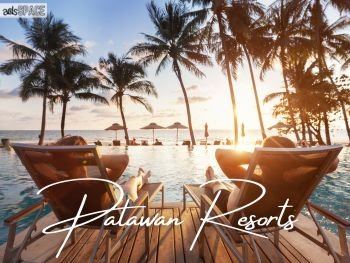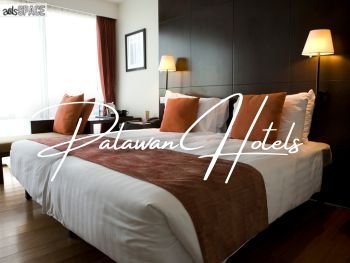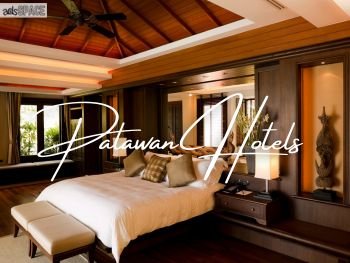Introduction
Puerto Princesa City is not only the capital of Palawan but also one of the most celebrated ecotourism destinations in the Philippines. With its extensive forests, crystal-clear seas, and rich biodiversity, it has gained international acclaim as part of the country’s “Last Ecological Frontier.” The city’s natural landscapes are not only tourist attractions but also critical ecosystems that provide food, water, and livelihood to local communities while serving as vital habitats for endangered species.
Puerto Princesa as the “Last Frontier”
Puerto Princesa has earned the reputation of being the “Last Frontier” because of its relatively intact ecosystems compared to many other parts of the Philippines. While urban development is inevitable, the city has worked hard to ensure that growth does not come at the cost of environmental degradation. This balance has made it an example of how cities can pursue sustainable development without sacrificing ecological integrity.
The global tourism industry has recognized this unique identity. International cruise liners and travel planners include Puerto Princesa in their itineraries, not only for its beaches and islands but also for its pristine landscapes, wildlife, and conservation-driven attractions.
Forests and Terrestrial Ecosystems
The city is covered by large tracts of lowland dipterocarp forests, mangrove forests, and montane ecosystems. These forests serve as watersheds, carbon sinks, and wildlife sanctuaries. They also provide non-timber forest products such as rattan, honey, and medicinal plants that sustain rural communities.
Many Indigenous groups, such as the Tagbanua and Batak, rely on these forests for food, shelter, and cultural practices. The protection of forest ecosystems is not only a matter of biodiversity but also of cultural survival.
Marine Ecosystems and Coastal Riches
Puerto Princesa is blessed with coastlines facing both the West Philippine Sea and the Sulu Sea. Its marine ecosystems include coral reefs, seagrass meadows, and mangrove forests. These habitats sustain fisheries that provide food and income for thousands of families.
The city’s waters are part of the Coral Triangle, recognized as one of the most biologically diverse marine regions in the world. Colorful reef fish, sea turtles, dugongs, and even whale sharks can be found in Puerto Princesa’s marine areas. Responsible diving, snorkeling, and dolphin-watching tours highlight the importance of conserving these fragile ecosystems.
Unique Flora and Fauna
Puerto Princesa is home to a wide array of endemic species found only in Palawan. Among its wildlife are the Palawan peacock-pheasant, the Philippine cockatoo, and the Palawan hornbill. Mammals include the Palawan bearcat, pangolins, and civet cats. Offshore, dugongs (sea cows) graze in seagrass beds, while dolphins and whales migrate through its seas.
The city’s flora includes a variety of orchids, ferns, and hardwood trees. The presence of rare species makes Puerto Princesa an important location for conservation research and biodiversity monitoring.
Protected Areas and Parks
Puerto Princesa is home to the Puerto Princesa Subterranean River National Park, a UNESCO World Heritage Site and one of the New 7 Wonders of Nature. This park protects a complex ecosystem of karst mountains, caves, and an underground river. Strict visitor guidelines ensure its preservation while allowing tourists to experience its grandeur.
Other protected areas include mangrove reserves and community-managed sanctuaries that balance resource use with conservation. These areas are critical not only for biodiversity but also for coastal defense against storms and climate change.
Sta. Lucia Environmental Estate
In response to the need for sustainable land management, Puerto Princesa converted a 1,072-hectare Industrial and Commercial Zone in Barangay Sta. Lucia into an Environmental Estate. The goal was to establish a center for ecotourism, environmental education, and conservation research. Today, the Estate is envisioned as both an engine for economic growth and a model for environmental preservation.
The Environmental Estate serves as a living laboratory where conservation, tourism, and livelihood programs intersect. It reflects Puerto Princesa’s long-term vision of becoming not only a city of natural beauty but also a global leader in sustainable development.
Ecotourism and Sustainable Development
Ecotourism is at the heart of Puerto Princesa’s strategy for sustainable growth. Attractions such as the Underground River, Honda Bay island-hopping, firefly watching, and mangrove paddle tours highlight the city’s natural wealth while promoting conservation awareness.
Tourism programs are designed to benefit local communities by creating jobs and supporting micro-enterprises, while also educating visitors about biodiversity and cultural heritage. This approach ensures that tourism does not only serve visitors but also uplifts residents and protects the environment.
Community Involvement in Conservation
Puerto Princesa’s environmental success owes much to the participation of its citizens. Community-based organizations, Indigenous peoples, and youth groups actively engage in mangrove planting, coastal cleanups, and eco-education programs. Schools integrate environmental awareness into their curriculum, ensuring that younger generations grow up with a strong sense of stewardship.
The city government also enforces strict anti-littering laws, marine protected area regulations, and waste management initiatives. These efforts earned Puerto Princesa the distinction of being one of the cleanest and greenest cities in the Philippines.
Environmental Challenges and Climate Change
Despite its successes, Puerto Princesa faces environmental challenges. Rapid urbanization, illegal fishing, deforestation, and climate change all put pressure on its ecosystems. Rising sea levels and stronger storms threaten coastal barangays, while shifting rainfall patterns affect agriculture and water supply.
To address these issues, the city has invested in reforestation programs, renewable energy projects, and climate adaptation strategies. Continued vigilance and collaboration between government, private sectors, and local communities are necessary to safeguard Puerto Princesa’s natural legacy.
Puerto Princesa Nature
The nature of Puerto Princesa is its greatest treasure. From lush forests and thriving seas to rare species and world-class ecotourism sites, the city embodies the meaning of sustainable coexistence between people and environment. By converting industrial zones into environmental estates, protecting its forests, and involving communities in conservation, Puerto Princesa sets an example for the Philippines and the world.
As challenges of climate change and development continue, the city’s future depends on its ability to protect what makes it unique—its identity as the Last Ecological Frontier. In doing so, Puerto Princesa not only secures its natural wealth but also inspires others to pursue a path where nature and progress thrive together.




